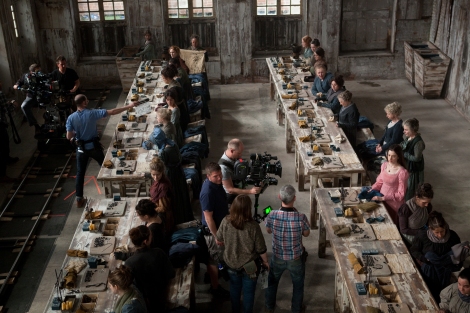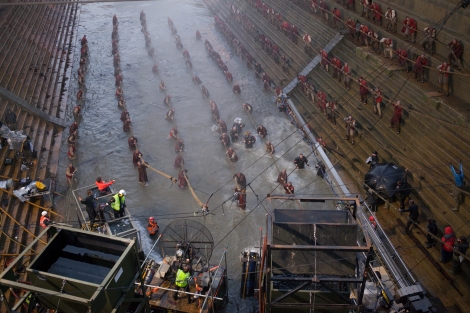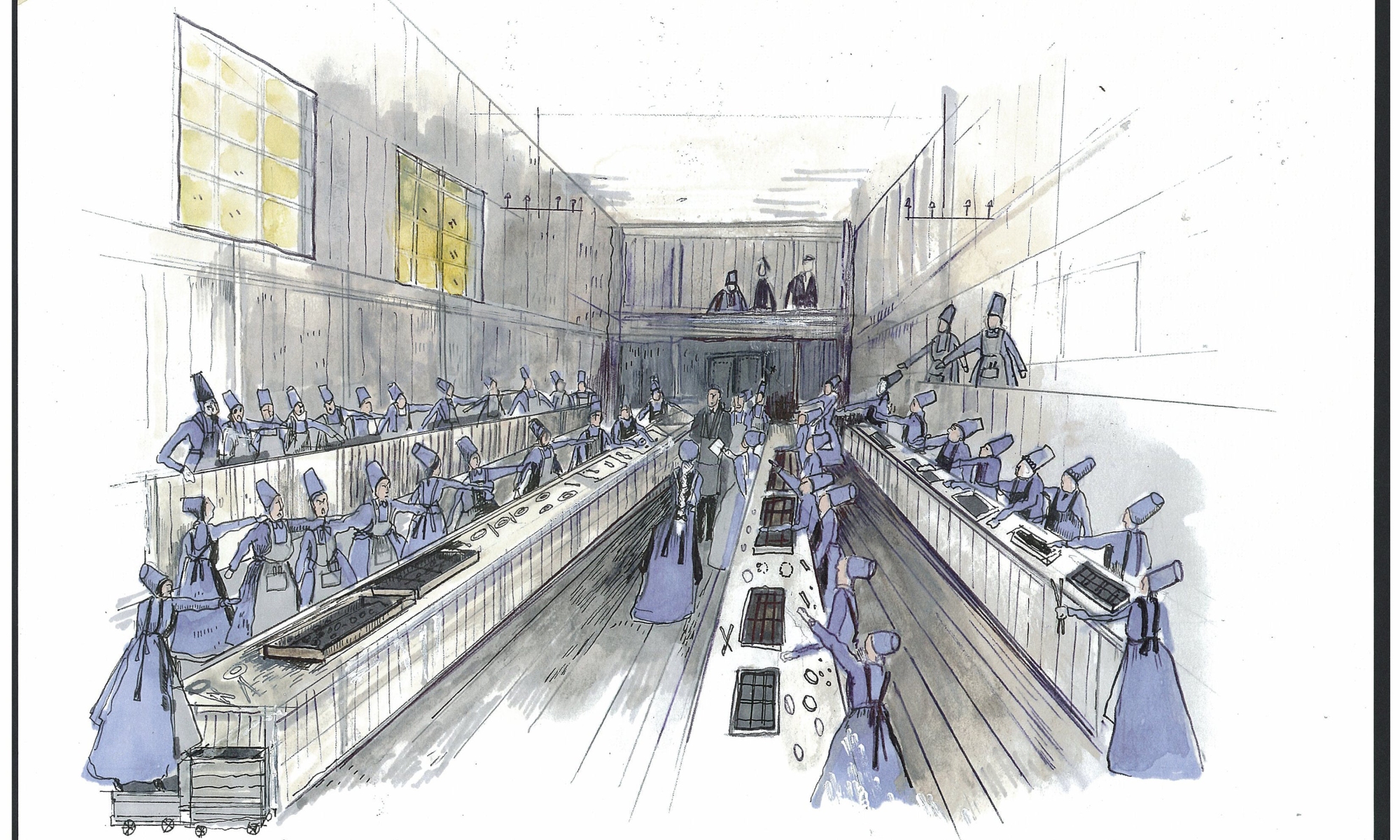Cari Lynn is an AwardsLine contributor. This article appeared in the Dec. 19 issue of AwardsLine.
It’s not likely that any of the 60 million theatergoers who saw the musical Les Misérables would have thought the stage production limiting, but they weren’t charged with taking the longest-running musical, set in 1800s France, and blowing it out to larger-than-life size. In what was described by Working Title producers as a “deceptively difficult” adaptation, director Tom Hooper assembled a team that included his longtime production designer Eve Stewart and veteran costume designer Paco Delgado to create a factually accurate world, sprinkled with the magic and fantasy of the beloved musical.

But what no one on the team knew going in was that all singing (and the film is 99% singing) would be shot live. This posed interesting challenges for determining locations, given sound considerations and the desire to use very little CGI. “But,” says Stewart, who was nominated for an Oscar for Hooper’s The King’s Speech, as well as 1999’s Topsy-Turvy, “new ideas are usually the best ones,” so the constraints didn’t narrow her scope as she scouted locations for 20 weeks. She eventually settled on a pristine mountain range in the south of France; the Portsmouth Historic Dockyard in England (where the HMS Victory is moored); an 18th-century rope factory in Kent (the timbers of which were so old that the crew was barred from lighting candles, so imitation flickering lights had to be used); the Old Royal Naval College in Greenwich; the River Avon in Bath; as well as a set crafted at Pinewood Studios in London. In each location, Stewart’s crew had to eliminate squeaky floorboards and door hinges, and horses had to be fitted with rubberized hooves. The only location Stewart didn’t have to adapt was Boughton House in Northamptonshire, which dates back to the 17th century and is dubbed the “English Versailles,” where the wedding scene was filmed.
As their inspiration, both Stewart and Delgado went “by the book”—as in, Victor Hugo’s 1862 tome, Les Misérables. “The novel is a recording of how people lived,” Delgado says, “what they ate, what kind of china they ate the food on, what kind of clothes they wore, what color the clothes were.” Both he and Stewart scoured flea markets and secondhand stores in France and Spain to purchase authentic clothing and furnishings.
While both studied the artwork of the period—Stewart cites the French artist Gustave Doré, while Delgado drew from Delcroix, Goya, and Ingres—the goal was far from creating a rose-colored world. “Tom has an amazing level of detail, and he wanted to show the levels of poverty and degradation in Paris at that time,” Delgado explains.

For the set, Stewart incorporated elements of a shipyard, bringing in nine tons of seaweed along with sacks of mackerel and hake that arrived straight from the wharf at 2 a.m. every day so that even the smell was authentic. “Everything with Tom is factual realism,” Stewart says, “and then, after that’s established, we can amplify and tweak upward.”
While the team tried to use as many authentic pieces and landmarks as possible, Stewart spent nearly a month re-creating the 40-foot-tall Elephant of the Bastille (Napoleon’s monument that no longer stands but was immortalized in Hugo’s book), carved from polystyrene.
Because a portion of the team came from a theater background, the set was initially outlined by building theatrical models, which is not commonly done on film. “You never know where Tom is going to film,” Stewart says, “so the buildings had to be (functional) with 360-degree stairs so the cast could run around.” Stewart also took care to craft the buildings with crooked, warped lines, evoking the age and an element of destruction.
Delgado—who had previously worked with Tom Hooper on a Captain Morgan TV ad, and was the costume designer for the Oscar-nominated Biutiful and Pedro Almodovar’s Bad Education and The Skin I Live In—had to “mar” his designs, creating 1,500 new costumes (out of a total of more than 2,000), which he then set about destroying with mud, grease, and blowtorches. “Paris was so poverty-stricken at that time,” Delgado explains, “and there was an amazing secondhand market where clothes were sold and resold and resold again until they were rags. It shocked me to learn that most poor people didn’t have any shoes.”
Delgado also wanted to tap into what he calls “the psychological atmosphere” of the time. “This is about the history of France, but also about the history of the Western world, and it was a big responsibility to create this world, but I also had to remember I was doing a musical with drama, and I needed to have color and fantasy.” One of the most poignant examples was the factory scene, where Delgado dressed Fantine (Anne Hathaway) in pink to contrast against all the other workers in drab blue. “In the book, Fantine is coquettish and beautiful and had some views of the petty-minded society, so I wanted this dress to belong to her lost past. It was all embroidered and had a level of craftsmanship that would make Fantine appear as an outsider among the rest of the women.”
Hooper and Delgado discussed a leitmotif, so Delgado evoked the colors of the French flag throughout, using blue costumes in the early factory scene, then red for the revolution, and then moving to white for the wedding and nunnery scenes. Delgado also altered the clothes to reflect the characters’ states, airbrushing shadows onto Fantine’s dress to enhance her wasted frame as she grew close to death, and then moving to the opposite extreme of padding Jean Valjean’s (Hugh Jackman) suits as his wealth and standing grew.
“This is our job,” says Delgado, “to try to interpret personalities and characters.”

